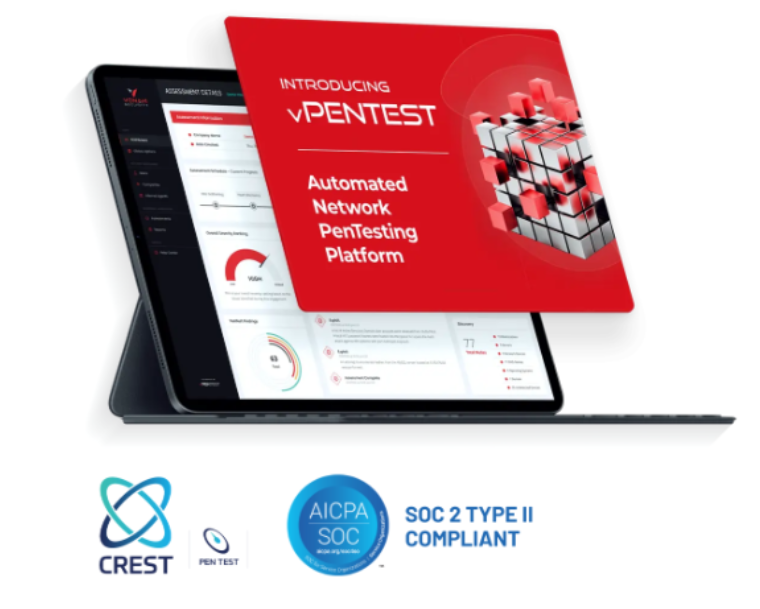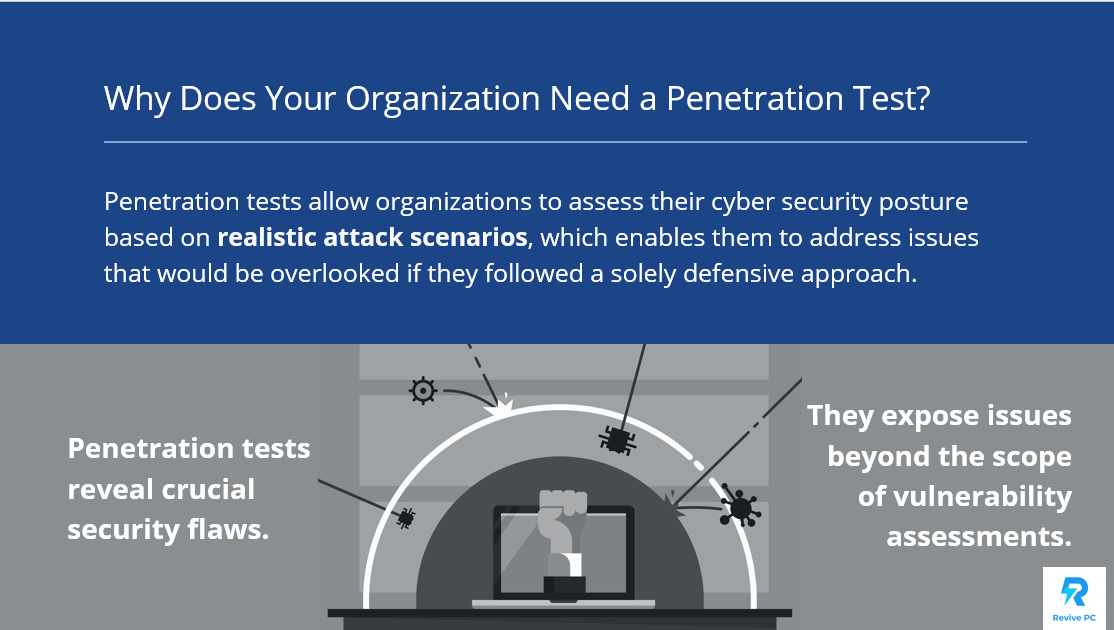Benefits of Penetration Testing With Us:
Run a penetration test on your schedule
We offer scheduling flexibility. Notify us on what day and time you would like to perform your penetration test, and we can get it booked immediately with no delays.
Real-time Notifications:
Notifications are always sent out when the penetration test starts and stops, keeping important individuals in the know as to when things are going on. This is also helpful in case there are some alerts that get triggered.
Affordability:
Our pricing is very competitive when compared to traditional penetration testing firms but provides a lot more value for the same or smaller price point.
Transparency at Your Fingertips:
Your IT team can always log into their portal to get a list of contacts involved in the project, communicate with our consultant, as well as get a progress update that provides preliminary results and expected completion dates.
Reduce Turnaround Time for Detection and Response:
Because all activities are tracked, including, any manual activities conducted by a consultant; organizations can download this activity log and correlate activities with their SIEM and incident response procedures. This is extremely useful in helping organizations make adjustments and fine tune controls, reducing the turnaround time for detection and response.
Reports that Drive Results:
The data provided in the reports will always be very informative. How these risks affect your organization, where your organization stands compared to its peers, how this compares to the last assessment, etc. are all examples of data that are included in each report.
COMPLIANCE READY REPORTING
vPenTest meets compliance requirements for several regulated industries, including:
- PCI DSS (Payment Card Industry Data Security Standard)
- HIPAA (Health Insurance Portability and Accountability Act)
- SOC2 (System and Organization Controls 2)
- ISO 27001 (Information Security Management)
- Cyber Insurance
Cyber Security Facts & Statistics
- In a time where news of data breaches are becoming “the new normal,” the need for organizations to evaluate their overall risk and avoid becoming the next victim has become critical. Organizations simply can’t protect themselves from risks they’re unaware of. Additionally, many organizations are simply unsure where to start.
- During a time where attackers are becoming more sophisticated and performing these attacks on a regular basis, it is imperative that organizations establish and maintain an information security program that allows them more flexibility on when and how often they can assess their environments.
- As small and mid-sized businesses (SMBs) embrace new technological developments like the rise of artificial intelligence (AI), cloud computing, and the internet of things (IoT), they often overlook the security implications of digital transformation. This leaves many organizations vulnerable to cyber theft, scams, extortion, and countless other cyber-crimes. As a result, two in three SMBs suffered a security breach in the last year and cyber-attacks are becoming increasingly sophisticated, targeted, and damaging. With the average cost per incident exceeding $380,000 as it is, a single security breach can be detrimental to a small firm. It is, therefore, vital that SMBs begin prioritizing cyber security.
Threat Intelligence
- Data breaches exposed 4.1 billion records in the first half of 2019, a 54% increase over the first half of last year. Source: 2019 Risk Based Security Report
- Two in three SMBs suffered cyberattacks and data breaches in the past year. Source: 2019 Global State of Cybersecurity in Small and Medium-Sized Businesses by Keeper Security and Ponemon Institute
- Last year, 43% of reported data breaches involved small to mid-sized businesses (SMBs), so say what you will about cybercrime, but it does not discriminate.
- However, in comparison with larger organizations, SMBs usually have very few resources to draw on in order to protect themselves against cyber threats and to help them recover if they experience a security breach. In line with this, a 2019 survey found that 25% of SMBs suffering a data breach in the previous 12 months ended up filing for bankruptcy and 10% actually went out of business. Source: National Cyber Security Alliance (2019).
- According to a recent industry study, the biggest challenge preventing small companies from optimizing their security strategy is actually a lack of qualified staff, which affects a whopping 77% of SMBs. Source: Keeper Security & Ponemon Institute - 2019
- According to a recent study, a staggering 76% of US SMBs suffered a cyberattack last year, and 69% experienced a data breach. Source: Ibid.
- Since 2017, over 22,000 new software and hardware vulnerabilities have been disclosed every year, leaving organizations of all sizes struggling to keep their systems updated. Source: Risk Based Security - 2020
- SMBs often need over a month to install critical patches affecting operating systems (35%) and third- party software (58%), putting them at risk of cyberattacks exploiting brand new vulnerabilities. Source: Kaseya - 2019
- Further complicating matters is the fact that many threat campaigns exploit vulnerabilities with relatively low CVSS scores that companies are less likely to prioritize. Source: RiskSense - 2019
- Recent research reveals that 4 out of 5 data breaches are the result of threat actors exploiting weak and/or stolen passwords. Many SMBs are vulnerable to password-based attacks because they have not implemented a proper password management strategy. Source: World Economic Forum - 2020
- Only 41% of small and mid-market firms enforce periodic password changes, just 38% prevent password reuse on internal systems and a mere 29% require a minimum password length. To make things worse, few companies regularly check if employee email accounts have been compromised in a data breach. Source: Keeper Security & Ponemon Institute - 2019
- Last year the vast majority of SMBs were targeted with exploits and/or malware that evaded their anti-virus (82%) and intrusion detection system (69%). Source: Keeper Security & Ponemon Institute - 2019
Penetration Test vs Vulnerability Test
A vulnerability assessment essentially just
tells you that the door is unlocked; however, a penetration test
actually tells you that, because the door is unlocked, we found an
unlocked safe, unsecured jewelry, credit cards, and social security numbers
laying around on the bed. It also explains how you could secure the door next
time, how to protect the confidential data laying around on the bed, and then
some.
5 Cybersecurity Tips for Individuals
1. Keep your software and devices up to date with the latest security patches and updates.
2. Use strong, unique passwords for all online accounts and consider using a password manager to securely store them.
3. Be cautious when clicking on links or downloading attachments, as they could contain malware or phishing attempts.
4. Enable two-factor authentication whenever possible, as it adds an extra layer of security to your online accounts.
5. Regularly back up your important files and data to an external hard drive or cloud storage, in case of a cyberattack or device failure.
The Difference
-
What a Vulnerability Test will find
- Patching vulnerabilities
- Default passwords amongst services
- Configuration deficiencies
- False positive vulnerabilities (e.g. flagging services based on version numbers, not knowing if patches are applied)
-
What a Penetration Test will find
- Weak domain user account passwords
- Sensitive files stored on network shares
- Sensitive data within databases
- Weak password policies
- Network share permission issues
- Man-in-the-middle attacks and possibilities

BUILT ON A FIRM FOUNDATION
- Cybersecurity Auditing and Analysis
- Vulnerability Assessment
- End Point Security Concepts
- Risk Management
- Essential Cybersecurity Principles
- Incident Handling
- Network Security Concepts

- NIST Framework
- Security Controls
- Malware Attack Concepts & Analysis
- Identifying Vulnerabilities
- Governance and Risk Management

Book A Free Discovery Call
MSP partners and customers can now receive a CREST-certified network penetration test report from vPenTest across Europe, the Middle East, Africa (EMEA), and Australasia. This prestigious accreditation places us among an elite group of only 300 CREST-accredited cybersecurity providers worldwide.



